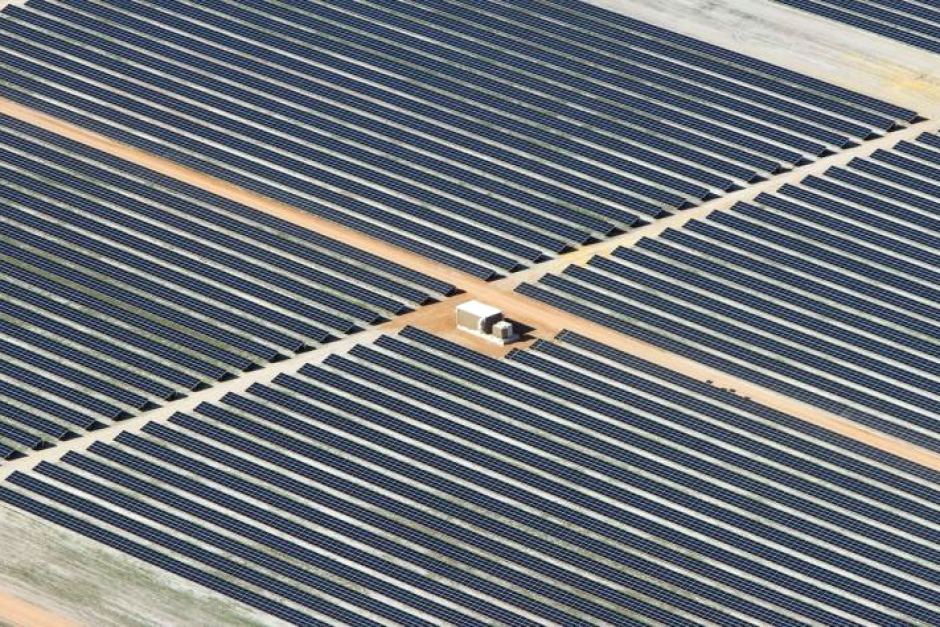Renewables are well-placed to make up a third of Australia’s National Electricity Market (NEM) within two years, as a number of states have made remarkable progress in adding capacity, according to analysts at Green Energy Markets (GEM).
Such progress would almost double the 2015 rate of renewables penetration – with clean energy contributing just 17.3% of annual electricity consumption three years ago – and would far exceed the 23.5% level mandated by the government's Renewable Energy Target.
According to GEM’s data, renewables are likely to feed more than a 40% share of electrical consumption by 2030, thanks to a range of corporate procurement tenders, while the untapped potential of projects under development could generate power equal to 85% of the NEM’s 2030 consumption.
When it comes to individual states, this month’s Renewable Energy Index from GEM has Victoria poised to source almost 40% of electricity from renewables by 2020, up from 17.7% in 2015 and far above its 2020 target of 25%. Queensland has picked up its installation rate too but New South Wales is lagging.
GEM calculates that when only rooftop solar is considered, by 2030 the share of renewables in Victoria’s electricity consumption will grow to 45.7%.
Queensland has seen the fastest growth in renewable energy supply – from 7.5% in 2015 to a projected 25% in 2020 and moving towards its 2030 target of 50%.
An energy exporting future
Lacking state targets, New South Wales is bringing up the rear and is likely to reach only a 19.7% renewables share by 2020, and 26.1% by 2030.
According to the GEM analysis, Tasmania and South Australia are moving towards a position where they could generate more renewable energy than they could consume, even with greater energy storage.
South Australia is poised to generate 70% of its electricity from renewables by 2020 and 85% by 2030. Its full pipeline could generate more than twice the state’s 2030 electricity consumption.
The report notes that with two wind farms under construction, Tasmania can meet its needs entirely with renewable energy and could generate 20% more renewable energy than it consumes if its development projects were to proceed to construction.
“The rapid ramp-up in investment in the past three years [has] shown the kind of growth possible with strong targets and supporting policy, and demonstrates we can reach for far greater targets down the track,“ said Miriam Lyons, campaigns director for online lobbying group GetUp!, which funds GEM's reporting.
NEG troubles
Even if contracting and construction commitments to solar farms and wind farms halted today, ongoing installations of rooftop solar would see renewables' national share reaching 39% by 2030, substantially exceeding the 36% envisioned under the government’s National Energy Guarantee (NEG).
“The NEG does nothing to build on this progress and sends us backwards when we could be bounding forward as a world leader in clean energy, creating jobs and taking action on climate change in the process,“ said Ms. Lyons.
The NEG program is regarded as deeply unambitious and analysts feel it offers little incentive for power consumers to turn away from low-risk, traditional fossil fuel power stations. That, say critics of the program, makes it highly unlikely any more renewables projects will get off the ground after 2020, casting a shadow on up to 15,000 jobs in large-scale renewable projects in Queensland and Victoria.
GEM estimates Queensland’s 1.4 GW large-scale solar pipeline could shrink to 129 MW by June under the NEG, slashing the number of solar construction jobs from 3,494 last month to 153 in just 12 months' time, and then zero by December 2019.
Meanwhile, the agricultural industry could also be severely affected by the NEG, as the requirement to reduce emissions by 26% by 2030 would impose significant costs and result in reduced production.
A separate analysis from the Australia Institute estimates reducing annual CO2 emissions by 18.7 Mt by 2030 would require less agricultural production, including significant reductions in livestock numbers equating to 2.9 million fewer beef cattle, 8 million fewer sheep, 290,000 fewer dairy cows and 270,000 fewer pigs
“Those who are concerned about the cost to the agricultural sector need to be concerned with the government’s plan to reduce emissions on a sector by sector basis,“ said Matt Grudnoff, report author and Senior Economist at The Australia Institute.
“This approach imposes significant costs on agriculture and other sectors that do not have the existing commercially-available technologies for emissions reduction that the electricity sector currently enjoys.”
This content is protected by copyright and may not be reused. If you want to cooperate with us and would like to reuse some of our content, please contact: editors@pv-magazine.com.




By submitting this form you agree to pv magazine using your data for the purposes of publishing your comment.
Your personal data will only be disclosed or otherwise transmitted to third parties for the purposes of spam filtering or if this is necessary for technical maintenance of the website. Any other transfer to third parties will not take place unless this is justified on the basis of applicable data protection regulations or if pv magazine is legally obliged to do so.
You may revoke this consent at any time with effect for the future, in which case your personal data will be deleted immediately. Otherwise, your data will be deleted if pv magazine has processed your request or the purpose of data storage is fulfilled.
Further information on data privacy can be found in our Data Protection Policy.